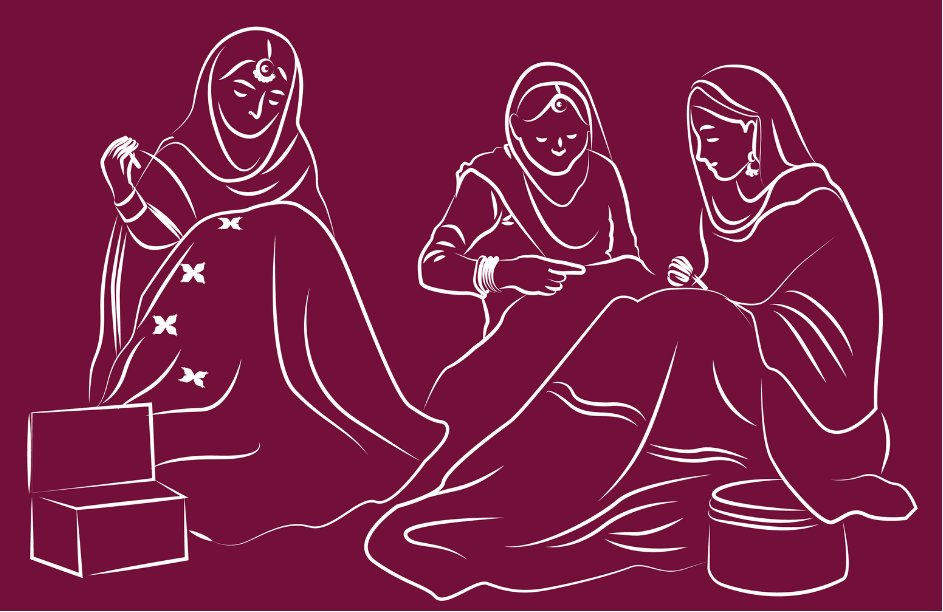Phulkari
Embroidery

History
Phulkari, meaning "flower work," is a traditional embroidery from undivided Punjab, including present-day Pakistan and Haryana. The term first appeared in 18th-century Punjabi literature and may be linked to the Iranian art of gulkari. Historically, phulkari chaddars were an essential part of a girl's marriage trousseau, crafted by mothers and grandmothers from the girl's birth. Girls learned to embroider early, with the number of phulkaris reflecting the family's status and marking cultural milestones.
Raw Materials and Tools
Phulkari embroidery uses khaddar, a handspun and handwoven cotton fabric, traditionally dyed in madder brown, rust red, indigo, or green. The cotton is spun on a charkha (spinning wheel). For embroidery, artisans use pat, a soft, untwisted silk floss sourced from Kashmir and dyed by local lalaris. A darning needle is used for stitching, and while not essential, an embroidery hoop may hold the fabric in place to maintain uniform tension.
Process
Phulkari embroidery is crafted using darning stitches on khaddar, a handspun and handwoven cotton fabric. The cotton, grown in Punjab, was spun on a charkha and woven by jullahas. Khaddar was typically dyed madder brown or rust red, with indigo or green used for gift pieces. Pat, a soft, untwisted silk floss from Kashmir, dyed by lalaris, is used for embroidery. Patterns are created freehand from the fabric's reverse using long and short darn stitches.
Design and Color
Phulkari embroidery consists of three main types: Bagh, Chope, and Phulkari. Bagh features dense, full-fabric coverage with stitches in horizontal, vertical, and diagonal patterns inspired by nature and household items, such as ghungat bagh and velanian da bagh. Chope, in red and yellow, showcases geometric patterns and is worn by brides during weddings. Phulkari has scattered designs, with sainchi phulkari depicting scenes of daily life, animals, and folklore. Nazar butti motifs ward off the evil eye.
Product Range
Phulkari’s product range includes embroidered chaddars, dupattas, and stoles, traditionally worn by brides or for ceremonies. It extends to accessories like bags, purses, and juttis adorned with intricate motifs. Home décor items such as wall hangings, cushion covers, and table mats also feature Phulkari embroidery. Modern clothing like kurtas and blouses blend Phulkari with contemporary fashion. Additionally, it is used for wedding gifts and accessories, adding a vibrant cultural touch to special occasions.
Additional Information
